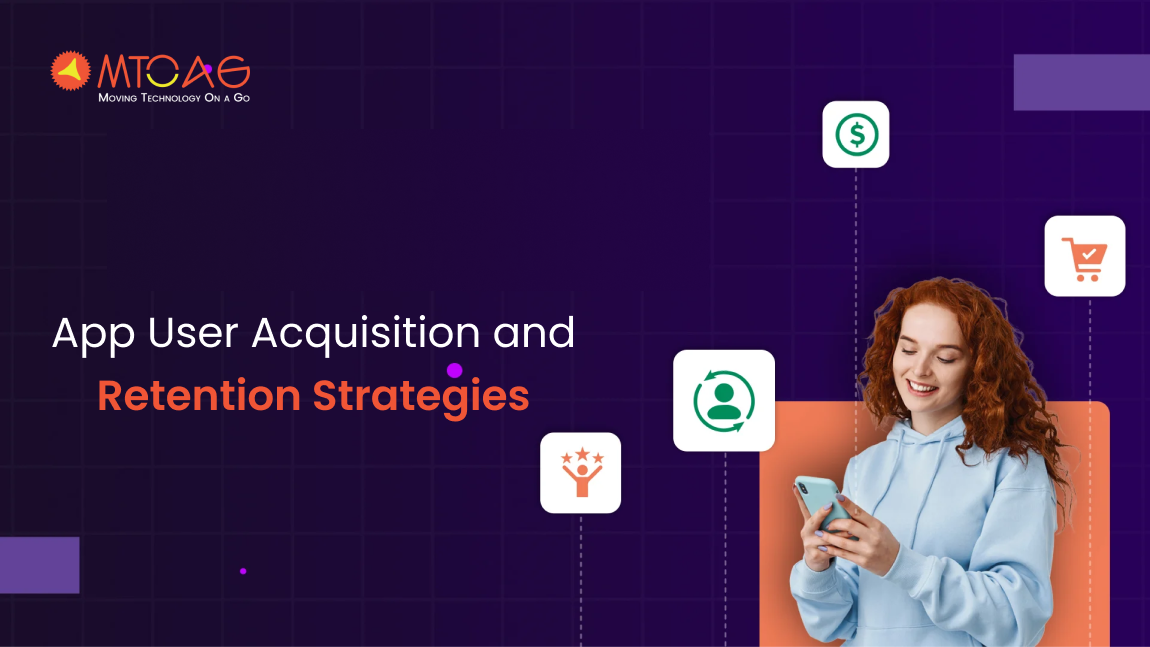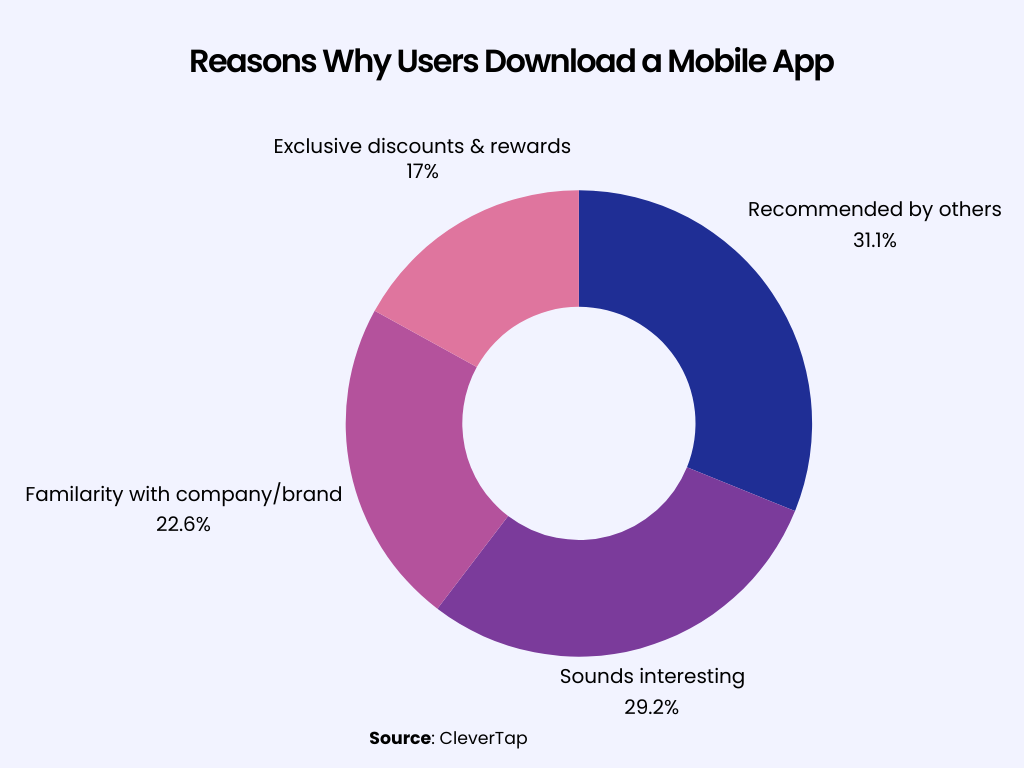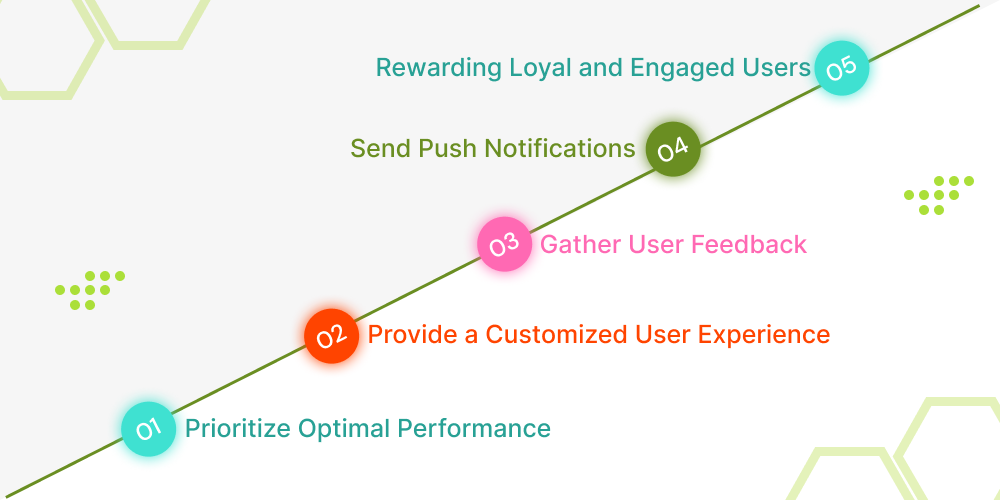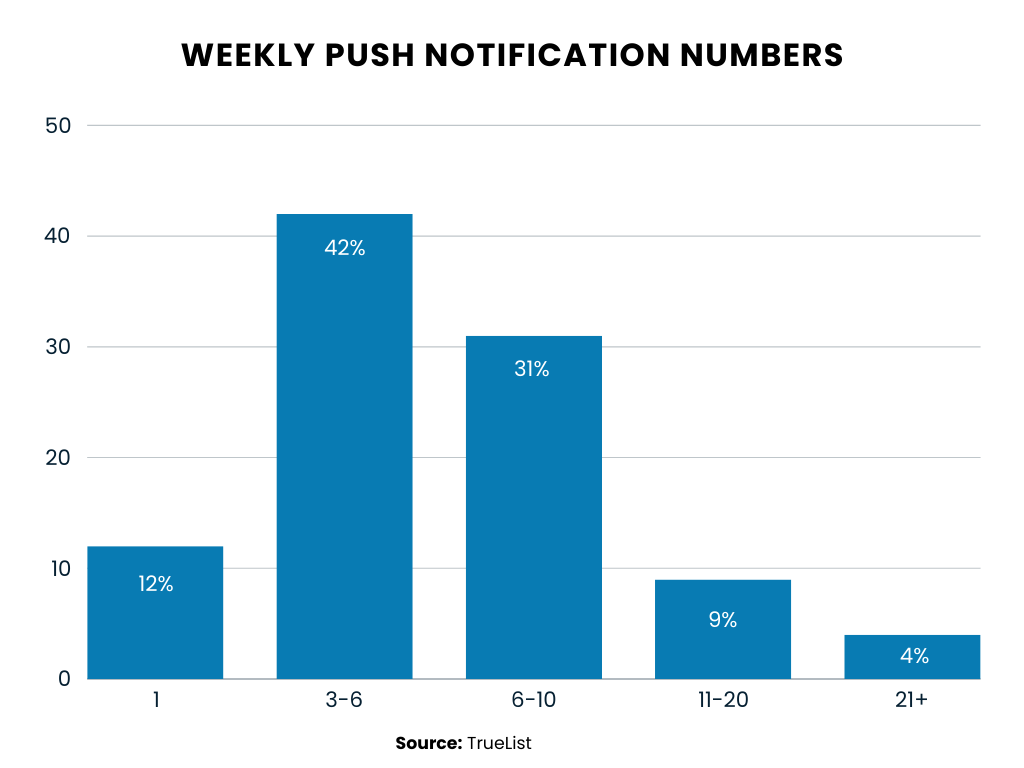2500+
Successful Projects

As you have passed down the mobile app development process, it is quite natural to feel excited about the users’ responses your app will receive. While expectations from your newly launched app may fill you with excitement, the reality is far from what you think. Unfortunately, mobile apps usually lose 77% of their users within the first three days, and it may reach 90% within 30 days. Although these stats don’t seem encouraging, there is no dearth of user acquisition and retention strategies that can help attract new users and maintain the loyalty of existing ones.
Table of Contents
Considering users' diverse needs, businesses nowadays are allocating a considerable part of their mobile app development budget to user acquisition and retention strategies. In fact, creating and adhering to these strategies will help businesses increase their profits while ensuring stable customer growth over time.
User acquisition and retention are two fundamental parts of a successful mobile application strategy, but most businesses confuse these two concepts as one. While user acquisition is all about attracting new users to your app, retention involves keeping them coming back. So, let’s start this blog to understand the different user acquisition and retention strategies for your mobile app.

User acquisition is the method of gaining new users for a mobile app via different marketing strategies. The common ways for app owners to attract new downloads include paid promotions, organic reach, and optimizing their presence in the app store (ASO).
The ultimate aim of user acquisition is to get users at a cost that is lower than the average revenue per user (ARPU) or the typical lifetime value (LTV) of a user.
Having a strategic plan for user acquisition is crucial for the success of any app business. Mobile marketers typically use a mix of techniques, advertising platforms, and marketing channels to find the most cost-effective method to gain more users.
Once the most profitable channels for user acquisition for a specific app are identified, businesses can then concentrate on expanding this marketing effort to achieve the maximum return on investment (ROI) and increase the number of active users.

Each company has a different audience, so their user acquistion channels should be. These channels are not limited to just one or two but many that include
Businesses frequently collaborate with various media outlets to display advertisements for their apps. This form of digital advertising, known as paid media marketing, can significantly expand a brand's visibility.
The advertisements can range from basic text messages to complex artistic designs or even video content. It's beneficial to use targeted ads that cater to specific demographics.
By developing user personas based on factors like age, profession, or interests, you can identify the audience you wish to target. The most common forms of paid media marketing are:
This channel involves using a brand's own media channels, such as a blog, a corporate website, or a social media account, to market to existing users. Showcasing targeted ads to an already engaged user base can enhance the visibility of a brand's mobile app.
Here are some advantages of using owned media marketing:
App Store Optimization (ASO) is a marketing strategy that is quite similar to Search Engine Optimization (SEO). It's a method used by mobile app marketers to boost the visibility of mobile apps in an app store's search results, thereby driving more traffic to the app's page and encouraging app downloads.
Here are some typical strategies used in ASO:
While the internet's vast reach makes digital marketing highly advantageous, businesses often diversify their strategies. And offline marketing has long been proven to be an effective channel for app promotion. Here are some methods that companies use to promote their apps offline:
Acquiring new users requires businesses to think creatively and analytically. It's not just about drawing in new users but also about keeping them engaged and loyal. This section offers practical and effective user acquisition strategies. Implementing these tactics can help your app stand out and reach the right audience.
Determining your initial investment capability can guide your UA campaign tactics. It's crucial to distribute your budget across various channels according to their efficacy and potential.
Take into account factors such as Cost per Install (CPI), Cost per Acquisition (CPA), and the Lifetime Value (LTV) of the users. Be prepared to modify your budget based on the campaign's performance and changes in the market.
Positive reviews can enhance your app's trustworthiness and visibility, leading to more downloads. Motivate your dedicated users to post reviews on the app store through email communication.

Make sure the process is efficient and quick. Respond to the reviews to express your gratitude and address any concerns raised. This can strengthen your bond with users and draw in prospective ones.
The success of your app depends on its ability to reach the right people. Determine who your ideal users are and gain insights into their habits and preferences. Enhance your app's exposure through organic search, app marketplaces, social media platforms, and email campaigns.
Use SEO and ASO strategies to boost your app's visibility in search results. Adopt a multi-channel strategy to cover all possible user interaction points.
Paid promotions can provide the initial momentum your app requires. Platforms such as Google AdWords, Facebook Ads, and various mobile ad networks offer options for targeted advertising. These platforms enable you to connect with potential users based on their interests, behaviors, and demographic profiles.
Pair them with engaging ad copy and visuals to draw in users. Remember to monitor and fine-tune your ad campaigns continually for optimal outcomes.
A freemium approach provides basic app functionalities for free, while premium features or content come at a cost. This model can draw in a large user base by reducing the entry barrier.
Users who see value in the free version are more likely to upgrade to the premium version. However, ensuring that the free version offers enough value to engage users and encourage them to upgrade is crucial.
User retention refers to the count of users who constantly engage with your app within a certain timeframe. This timeframe is often set by the business. You might decide to evaluate your user retention rate regularly, monthly, or quarterly, or select a distinct period for analysis.
User retention can be calculated for your entire application or zeroed in on particular features. If you're assessing user retention for your app, you might consider the frequency of logins within a certain period.

The user retention process has three key stages, which start from app introduction to habit development. Ensuring each stage provides a seamless and enjoyable experience with your app is essential to keeping a high retention rate.

In the initial stage, new users register and familiarize themselves with your app. A smooth and simple introduction process can expedite users' transition to the next stage. Conversely, a complex or unclear process can deter them. This stage is also your chance to highlight your product's key features that are most likely to encourage regular use.
This stage is when users start to recognize the value of your product. The duration it takes for a user to reach this moment is known as the Time-to-Value (TTV). Users who have reached this stage tend to perceive your product positively and are more likely to remain loyal.
In the final stage, users incorporate your app into their daily routine, forming a habit. Users at this stage feel a need for your app, and increasing the number of users at this stage can improve user retention rates.
Providing continuous support through in-app messages can help users discover new features and functionalities as they transition into this stage, leading to more engaging products and boosting overall product adoption.

Retaining your users is equally important as attracting new ones. While it’s easy to attract new users, retaining them for the long term requires a lot of effort and strict adherence to best practices and strategies.
To enhance user retention, prioritizing your app's performance is crucial. People nowadays aren’t patient enough to wait for even a second. A word of caution: if your app is slow or filled with errors, it's unlikely to foster high user engagement. Users will simply switch to a more efficient alternative. There's nothing more frustrating than an app that doesn't function as expected.
To guarantee optimal app performance, your primary focus should be on minimizing app crashes, improving gesture recognition accuracy, and reducing loading times.
The checklist of urgent technical issues is quite long. Allocate some time to oversee the app's overall performance and promptly rectify any errors or bugs that arise.
Everyone appreciates feeling valued, whether it's in their interactions with a mobile app or in their daily lives. Customizing your content can cultivate a more loyal user base that values your personalized approach.
Surprisingly, many apps still don't adapt their content to their users and fail to provide a bespoke app experience. This is your chance to step in and captivate them.
But how do you do this? You have a wealth of data at your fingertips. Data, believe it or not, is one of your most potent resources. Use it to gain a deeper understanding of your users.
If you want to keep your users captivated and actively involved, you must pay attention to their feedback. This can be achieved by collecting insightful user responses. For instance, you can ask users about their individual experiences with your mobile app or whether they would recommend it to their family or friends.
Another excellent source of data is to examine app scores and critiques on the app store page. Users are often keen to express their thoughts or at least provide star ratings. You will likely review these before deciding to install an app. Look for the feedback users post on Google Play or the iOS App Store and leverage it effectively.
What happens if they commend your app and highlight some issues that require rectification? That's even more advantageous for you. In this manner, you'll uncover your users' difficulties when using your app. After all, there's always potential for enhancement and rolling out updates.
Push notifications are a powerful tool for engaging users and ensuring they return to your app, but they must be used judiciously. Why is this so important? Notifications that are too intrusive will not engage users. In fact, they may have the opposite effect: users who are bombarded with irrelevant messages may become annoyed and uninstall the app.

For instance, Netflix doesn't frustrate you with a barrage of irrelevant notifications. Instead, it sends reminders about the shows and movies you're likely eager to watch. This is the ideal way to use push notifications to boost user retention!
People enjoy being rewarded. Indeed, 69% of consumers check if there are any reward programs for loyal customers when choosing an online store.
Offering various rewards, discounts, or referral programs can make users feel like they've snagged a great deal and saved money on a product or service they would have purchased anyway. Plus, it's an excellent strategy to persuade users to choose your business over your competitors.
Creating working app user acquisition and retention strategies is indeed challenging. However, by using the correct methods and a data-centric approach, you can overcome these obstacles and elevate your app to unprecedented levels. By integrating both organic and paid strategies, refining your app, and generating captivating content, you can draw in, engage, and retain valuable users.
Maintaining consistency is vital for user acquisition and retention. Monitor your key performance indicators, modify your strategies as needed, and keep abreast of the latest trends. At Mtoag Technologies, we excel in assisting mobile apps like yours to overcome the complexities of user acquisition. Our strategies are designed to ensure that your mobile app achieves its maximum potential.
This model illustrates a user's journey from the first contact with an app to the final goal of conversion. It includes stages like awareness, interest, consideration, conversion, and retention.
User retention refers to the ability of an app or product to retain its users over a certain period. High user retention means users continue to use the app long after they've downloaded it.
A good retention rate varies by industry, but typically, a rate above 20% after 30 days is considered good for mobile apps.
App retention can be calculated by dividing the number of users active later by the number of users during the initial download period.
User acquisition is calculated by dividing the total cost of marketing and advertising by the number of new users acquired in the same period.